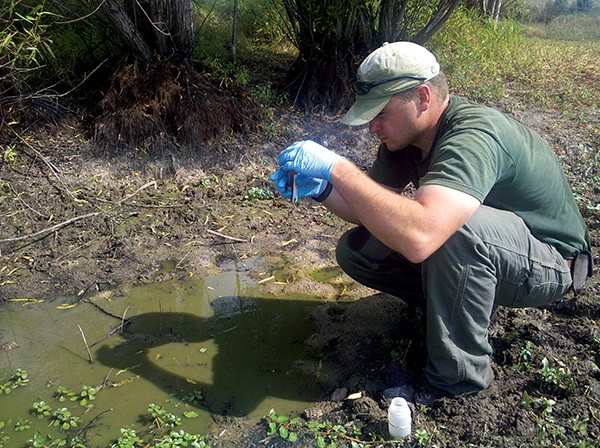A proposal by the Tennessee Valley Authority (TVA) to drill five wells into the Memphis Sand aquifer — the source of the region’s famously clean drinking water — and siphon up to 3.5 million gallons of water per day to cool its new, under-construction gas plant has been making waves among environmental activists and members of city and county government.
Just last week, a Shelby County Commission committee discussed the formation of a task force to study county regulations for well-drilling, and County Commissioner Steve Basar asked the Shelby County Health Department not to approve two of the TVA’s five drilling permits without the commission’s permission (the department has already approved permits for three wells).
The issue has led to a discussion about the health of the Memphis Sand aquifer. At a Sierra Club-hosted panel on the issue last month, Memphis, Light, Gas & Water (MLGW) president Jerry Collins said the aquifer is actually in better shape than it was 16 years ago when the average amount of water pumped from the aquifer daily was 159 million gallons. Last year, 126 million gallons per day were pumped.
The University of Memphis Center for Applied Earth Science and Engineering Research (CAESER) studies the aquifer, and program manager Scott Schoefernacker took a few minutes to discuss what makes the Memphis Sand so special and just how much water it holds. — Bianca Phillips

U of M’s Scott Schoefernacker
Flyer: Do we get all of our drinking water from the Memphis Sand?
Scott Schoefernacker: Mainly from the Memphis Sand but also from the Fort Pillow aquifer, which is below the Memphis Sand. Everybody in the area gets their water from either one of those.
What makes our aquifer so special?
It’s part of a large aquifer system that extends from Southern Illinois all the way down to Louisiana. There are six aquifers within that system. The Memphis Sand is the largest one. It’s anywhere from 600 to 900 feet thick. It’s a large body of sand, and it’s full of water. There are some clay layers in there, but for the most part, it’s mainly sand, and that’s fairly unique.
[MLGW does very] little processing to the water. They aerate it to put oxygen in it. They throw in chlorine and phosphate and fluoride. It comes out from the ground, and they do that quick process, and it goes straight to the tap. It’s cheap. We have some of the lowest water rates in the country.
Is it really the cleanest drinking water in the country?
It is some of the cleanest since we don’t have to do much to it to take out contaminants. In some parts of the country, they have to process their water to get it up to standards to put out there. We’re lucky.
Why is there very little contamination?
The sand is like a big filter pack. Contaminants do get into the aquifer, but it’s so large and so vast, and there’s so much water, so it typically gets filtered out.
How much water is in the aquifer?
[CAESER] director Brian [Waldron] always throws out the number of 57 trillion gallons, give or take, underneath Shelby County. If you took all the water from underneath Shelby County and you flooded the entire county, it would basically go to the top of Clark Tower.
Is 3.5 million gallons of water a day a lot?
In my mind, it’s not that much water per day. The [United States Geological Survey] has said, if they pumped just the 3.5 million gallons a day, it would change the water level by seven feet [at the plant site and four feet at a radial distance of one mile]. Typically, we don’t have the issue of quantity. It always comes down to the issue of quality of water, and we have good quality water, so you want to preserve that quality.
How quickly does the Memphis Sand recharge?
There’s a study being done out at a research site at Pine Crest, just east of Moscow, Tenn. It’s not very well-known how fast it recharges, but we’re working on it.
Recharge comes from unconfined areas (meaning there’s no clay layer) of the Memphis Sand, and in our case, that’s Fayette County. That’s our recharge area.